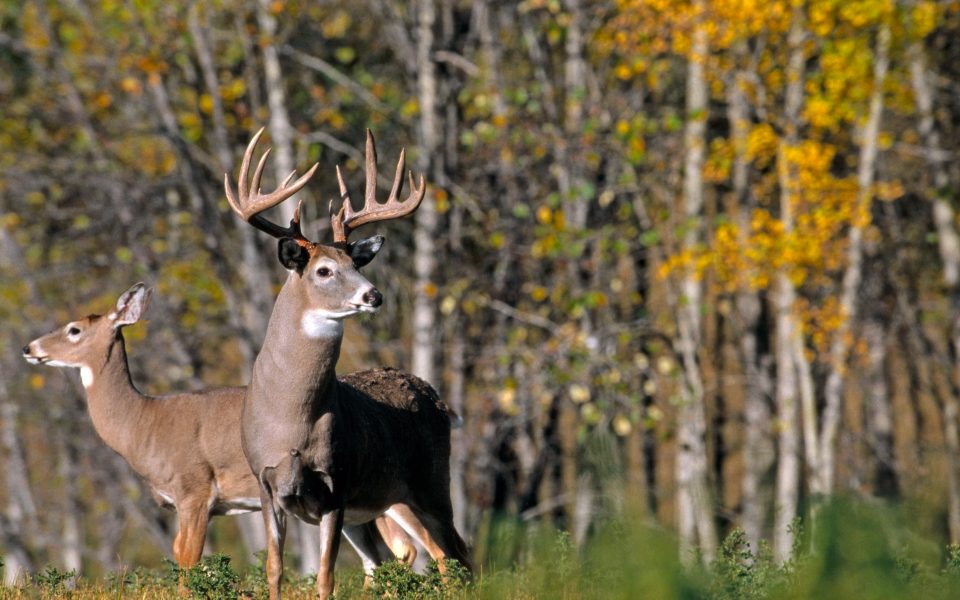The Doe Problem
Doe harvesting is the primary means wildlife managers use to control white-tailed deer populations. Based on variables like past and recent harvest trends, winter severity, and population density estimates, managers set permit quotas, seasons, bag limits or other harvest opportunities anticipating a certain outcome. That system only works if hunters follow consistent patterns, but trends can change.
According to the National Deer Association’s (NDA) 2023 Deer Report, “American hunters killed more antlerless deer than antlered bucks for the first time in 1999…” That remained the trend for over a decade, then began to fade. Since 2015, the antlered: antlerless ratio has been much closer. The trend has shifted to more hunters passing up legal antlerless deer, resulting in states sometimes not meeting management goals. Finding a solution first requires looking at the reasons.
The Causes of Declining Doe Harvest
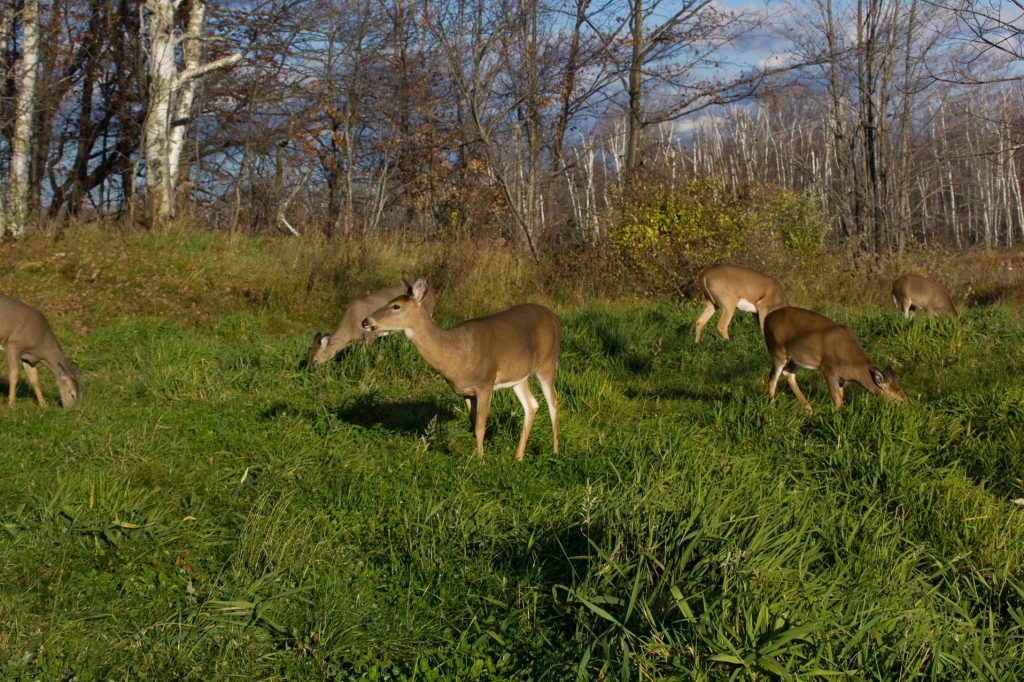
Linda Arndt
There are some legitimate reasons for more recent doe harvest declines. Events like serious disease outbreaks and severe winters caused concern among hunters and managers about over-harvesting antlerless deer. But those things are temporary and localized; and while the herds recovered the sentiment persisted. There are also fewer hunters, killing fewer deer.
According to NDA, the proportion of hunters that killed at least one deer declined from 50% in 2011, to 41% in 2019; and the proportion that killed more than one deer declined from 23% in 2011, to 18% in 2019. Why?
A Quick Look Back
There was a time and a place when and where I would not have hesitated to pull the trigger on any legal deer. I began hunting when whitetails were few and far between in the northeast. Bragging rights at camp often went to anyone who saw a deer, and drawing a coveted antlerless tag was like winning the lottery. As deer numbers increased, so did opportunities, and harvests, and then attitudes.
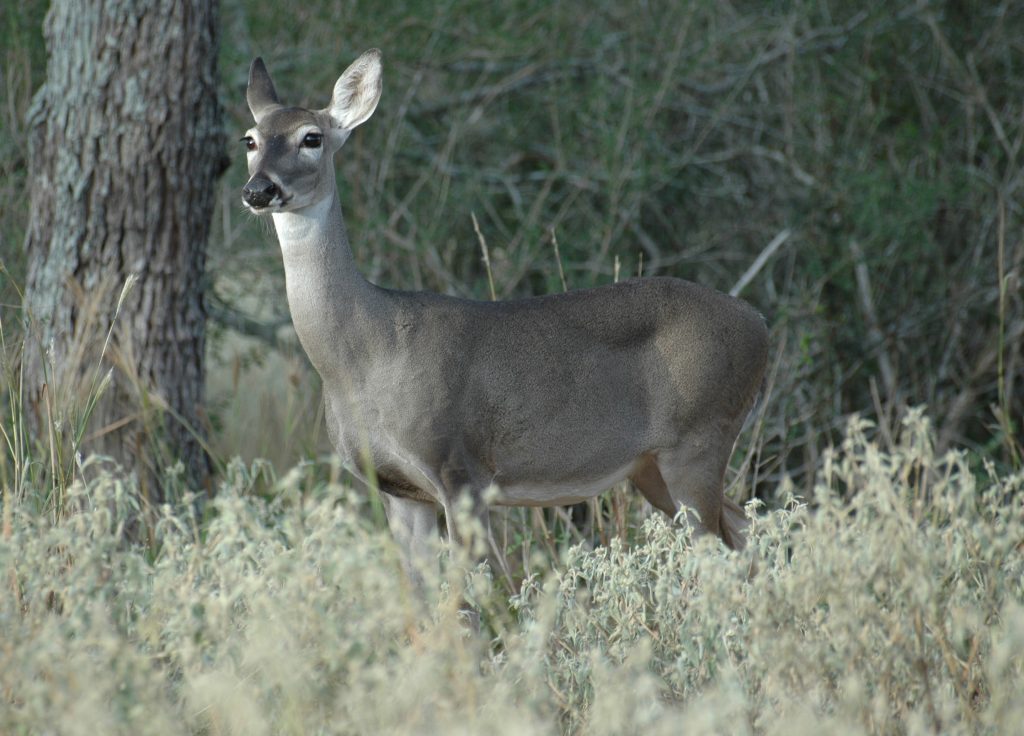
Bob Humphrey
The latter change was slow at first. Generations of hunters who grew up with conservative regulations and with a mindset of protecting does to grow the herd were reluctant to capitalize on increased antlerless hunting opportunities. It took time, lots of education and continued growth in deer herds, but once the ball began rolling it picked up momentum quickly. A new generation of hunters armed with greater knowledge of wildlife management and an eagerness for success began buying in. The “management doe” concept was born and not only was it acceptable, but it encouraged you to “do your part.”
Somewhere along the line we got spoiled. Bigger, healthier herds made it easier to harvest not only any deer, but a good deer. Hunters that, a decade earlier, were eager to punch a tag became increasingly more selective, passing up does and young bucks.
Some of the blame is sometimes attributed to outdoor media for promoting the big buck mentality; but we’re really only giving the people what they want. Bagging a bragging-sized buck has always been the deer hunter’s dream, whether they’re scarce or abundant. But the more abundant they become and the more realistic that goal seems, and the less likely we are to settle for something less. So we’ve gone from, “if it’s brown, it’s down,” to, “it’s just a doe.”
The Pennsylvania Harvest Experiment
Pennsylvania provides a prime example of this transition. A little over 2 decades ago, the Keystone State’s forests were on the verge of ecological disaster. There were more deer than the land could support and virtually no regeneration of preferred hardwood species. Meanwhile, the annual buck kill consisted of 85-percent yearlings. The solution was simple: shoot more does and fewer young bucks; but selling that concept to hunters who had become accustomed to a certain level of success would be a daunting task.
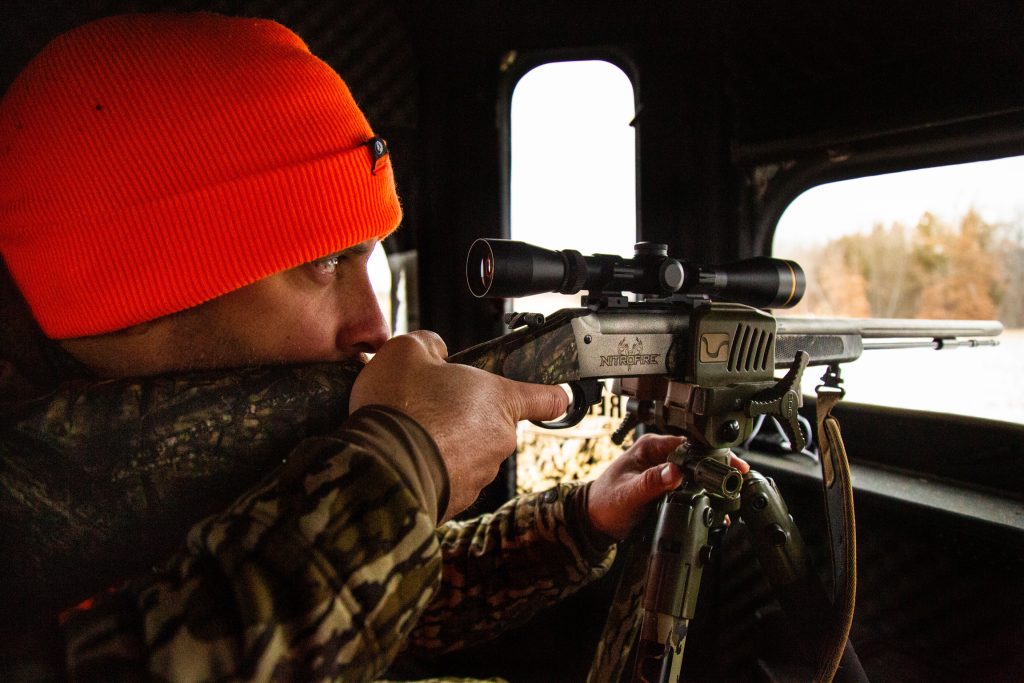
Former Pennsylvania Game Commission (PGC) deer biologist Gary Alt came up with an innovative solution, a “carrot” of sorts. Mandatory antler restrictions were not the goal, but a positive side effect of the new management plan. The PGC was essentially telling hunters, “You help us thin the herd and we’ll give you older, bigger bucks.” Initially, it resulted in a dramatic increase in doe harvest and a decrease in buck harvest. Additionally, the proportion of yearling bucks harvested went from 90 to 67 percent in three years, and by 2012 was down to 48 percent. Dissenters complained about not seeing or shooting as many deer as they once did, but many hunters who had never even seen a branch-antlered buck were suddenly shooting them with some regularity. And despite claims to the contrary, the herd wasn’t decimated. In 2021, Pennsylvania hunters harvested 231,490 antlerless deer and 145,320 antlered bucks, only 38% of which were yearlings.
Deer Management 101
Though it seems to be on the rise, getting hunters to harvest enough does has long been one of the greatest challenges facing a wildlife manager, even on intensively managed properties. We all (or at least most of us) want to see and have the potential to harvest more deer, and knowing a doe’s potential for perpetuating the population, it seems somewhat counterintuitive to remove them. However, there is a law of diminishing returns as the population grows beyond what the habitat can support, resulting in boom and bust cycles. A little basic biology will help illustrate the point.
Most hunters and managers are familiar with the concept of carrying capacity, which biologists designate with “K,” and represents how many individuals the available habitat can support. When a population is below K it experiences a rapid growth period in which recruitment is maximized and more deer are entering the population. As it approaches K, rapid growth continues, then overshoots. There isn’t enough food and eventually the population crashes. Meanwhile, the habitat and K have been degraded. After the crash, habitat may recover, but not completely. Thus there will be a new, lower K for the recovering deer herd. If the situation continues, it only grows worse. Habitat becomes further degraded leading to poorer nutrition, and increased intra-specific interaction and aggression means more stress, declining health and an increased possibility for disease transmission. Nature has its ways and if we don’t thin the herd, she will. Unfortunately, that leads to the aforementioned boom and bust cycles and long-term decline.
The goal of a deer manager is sustained yield – maintaining a harvestable surplus indefinitely. It’s a bit more complex, but we’ve learned from decades of deer research that if you want to maximize deer harvest over the long term, the population should be maintained at around 50% of K, as this promotes the highest rate of recruitment while allowing the highest harvest rate. Biologists refer to this as “Maximum Sustained Yield” or MSY. Maintaining MSY is idealistic at best, because it’s seldom, if ever achieved. One reason is the aforementioned reluctance of hunters to kill enough does. Another is their inability to do so. The harder deer are hunted, the harder they become to hunt.
Often, a more realistic approach is “Optimum Sustained Yield” (OSY), which occurs at around 60%-70% of K. The habitat is not unduly impacted, recruitment rates are still relatively high but deer sightings are higher, leading to greater hunter satisfaction – a better hunting experience. It’s also easier to accomplish. But we still have to convince hunters to buy-in because it’s closer to the tipping point of having too many deer on the landscape.
Maine offers a more recent example of one potential solution. Outside of the expanded archery zones, it has a one-and-done bag limit. Hunters drawn for an any-deer permit formerly had the option of shooting a buck or doe, but many would hold out for a buck, intending to shoot a doe only as a last resort. With the herd growing in southern and central Maine and the hold-out rate remaining consistent or even rising, the state increasingly failed to meet antlerless harvest objectives.
Two years ago they modified the system. In place of any-deer permits, the Department of Inland Fisheries and Wildlife (IFW) issued fewer antlerless-only permits. Rather than an either-or, this was an additional deer, so hunters could shoot a doe and continue hunting for a buck, or vice-versa. It’s still too soon to tell how well, but so far it seems to be working.
More Reasons for The Dilemma
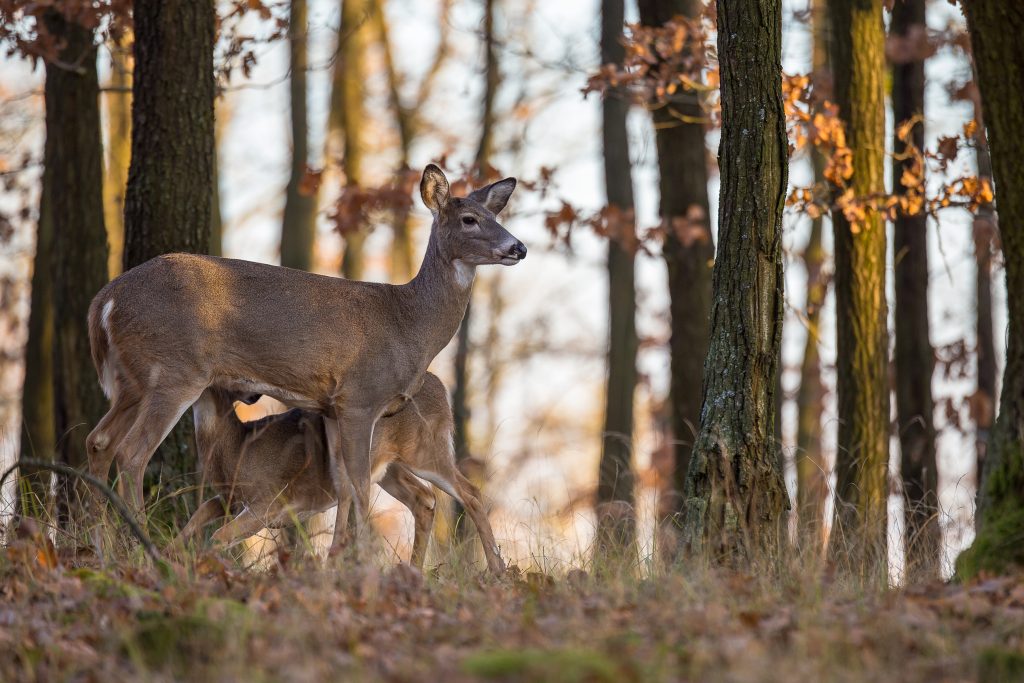
Karel Smilek
Sitting on your stand on a balmy October afternoon you glimpse a doe filtering through the greenery, slowly approaching an opening. You carefully lift your bow, hook on your release and prepare for a shot. Then there’s more movement and twin fawns trot recklessly ahead of their mother; so you let down and enjoy the show.
Sometimes hunters will pass up a doe because it has fawns, and they’re concerned the orphans may struggle to survive. There’s ample research demonstrating that once fawns are weaned they can survive independently. There’s even one study that suggested orphan buck fawns may gain a slight advantage in some instances because they’re less likely to disperse as yearlings, instead remaining in more familiar surroundings.
Some weeks later you’re slipping as slowly and quietly along as you can on the dry forest floor when you hear the rapid patter of approaching footsteps. The running doe slams to a halt in an opening and shoulder your gun, aim and fire. The shot feels good, you hear the deer crash but before you can move toward it you hear more running steps, then repetitive grunting. The buck pauses in the same opening, tongue out and steam billowing from his nostrils. All you can do is watch as he suddenly recognizes your shape, wheels and bounds off with a whitetail salute.
Of all the reasons to pass up a doe, this might be among the most valid, sometimes. I have a stand overlooking a large wet meadow that annually serves as a bedding area for one or two does and their offspring. We rarely see bucks there until the rut, then it’s like frat night at the local college pub. For three consecutive years my son took nice bucks from that stand, all within the same few days and all in the company of does.
That might be a wise tactic in areas of lower deer densities, and during that magical week, but could work against you in denser populations. If there is an abundance of does, bucks won’t have to travel as much or as far to find them. More bucks might be locked-down during the rut, further reducing your odds of bagging one.
“Don’t shoot any does.” The instructions from my host were simple and direct, and despite holding two doe tags I wasn’t about to be an ungrateful guest. “It’s one of our best big buck spots and if you’re going to burn the stand I want it to be for a good reason,” he continued. That seemed reasonable enough. “After you kill your buck I’ll take you to another spot and you can kill all the does you want.” Even better!
There’s a time and a place for everything and like my son’s “money” stand, this time and place was a “no-does” proposition. Whether it’s your own ground or more importantly if it’s someone else’s, stick to the plan, but try to create alternative options that allow you to meet management objectives.
Skepticism is yet another reason for reluctance. Despite what the old curmudgeon at the local diner or the family hunting camp might say, “those dang biologists” actually do know what they’re doing. They don’t have to count every deer to know how many are out there, and how many can safely be removed. They use several reliable indices. One is evaluating the level of browsing and the variety and abundance of food plants present. If habitat is heavily browsed and preferred species seem to be absent or lacking, you have too many deer. Another way is measuring yearling antler beam diameter (YABD). It will vary geographically but if average YABD is within the specified local range, your herd is healthy. If it’s below, you have too many deer. Yet another index is body weight, which requires keeping long-term records and evaluating trends. Most state agencies do this as do many hunt clubs and private land managers.
It’s also worth noting that harvest goals aren’t always based on biological carrying capacity. Sometimes they’re based on cultural carrying capacity – what humans will tolerate. This is especially true for areas of denser human development where the land could support more deer but that leads to more car-deer collisions, crop and property depredation and an increase in Lyme disease or other human maladies.
Managers may use controlled hunts or liberalized archery seasons and bag limits to encourage higher harvest, and often the bowhunters are happy to help. Even then it doesn’t always work. Some studies show the minority of hunters are taking the majority of deer in these circumstances; some are just better at it than others, or more willing or able to take the time, and the does. There’s also a law of diminishing returns. Having too many hunters in a small area can reduce everyone’s chances.
Still More Reasons
You’re the new guy in camp. This is your first, probationary season and you’re there on the recommendation of a friend. No sooner has the sun crested the treetops when you hear a distant shot and several minutes later two deer bound in your direction, slow to a trot, then a walk, then stop and look over your shoulder. This is it; moment of truth. You aim, fire then watch as the pair bolts, one falling behind then dropping in its tracks. Walking up on the downed deer your elation suddenly turns to dismay as you notice two little buttons on the buck’s forehead. Already you’re dreading the reaction of others in camp and you vow never to let that happen again, even if it means you might pass up a doe.
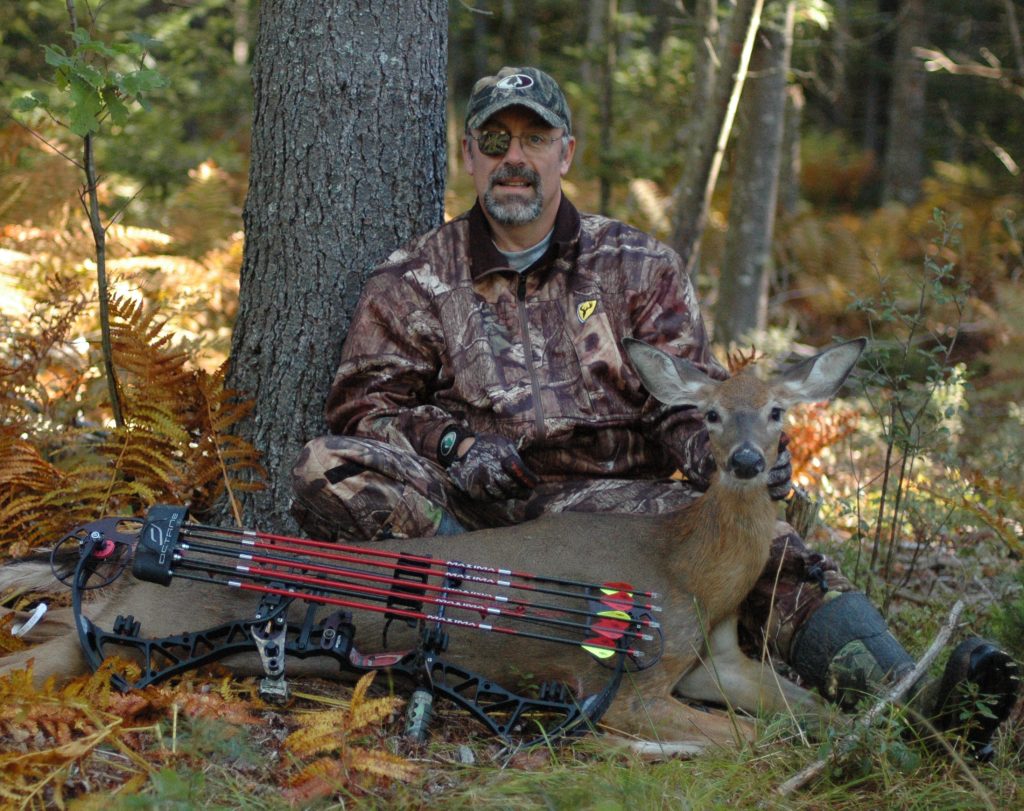
Modern deer hunters in general are more educated and sophisticated when it comes to deer management. They understand the importance of protecting young bucks to better balance the age structure. But sometimes that can have unintended negative consequences, like discouraging antlerless harvest for fear of shooting a buck fawn. That shouldn’t be the case. First, with a little knowledge and experience it becomes easier to tell the difference. Second, if your herd is healthy, it can withstand a few mistakes, and nobody should be shamed for making one.
The modern deer hunter, to me at least, seems more ethical as well. The urgency of wailing away lest you miss a chance has been replaced with greater emphasis of making a quick, clean kill. Increased opportunity has also fostered an ethic of responsible harvest. Like the song says, “You take what you need and you leave the rest…” That’s a personal choice and nobody should fault you for making it, but bear in mind it’s a harvestable surplus that won’t go to waste. You may not need it but it’s for sure that somebody else does, and would eagerly take a deer off your hands. There are also programs like Hunters for the Hungry that will take, process and donate your deer. Remember, it’s not wanton waste; it’s a harvestable surplus.
It took me until the next to last day of rifle season to bag my buck last year. As I have for the past several seasons I then loaded up my .56 caliber Renegade caplock with a patched round ball and set out with casual intentions of filling an antlerless tag. Sitting in the snow I wondered if I’d actually do it. I’d just spent a weekend processing my deer, and another the week before cutting and wrapping my son’s. We had enough meat in the freezer and the prospect of gutting, dragging, skinning, cutting and wrapping suddenly didn’t seem so appealing. The does never showed but wonder whether I would have pulled the trigger or not if they had. Guess I’ll have to wait until next year to find out.

